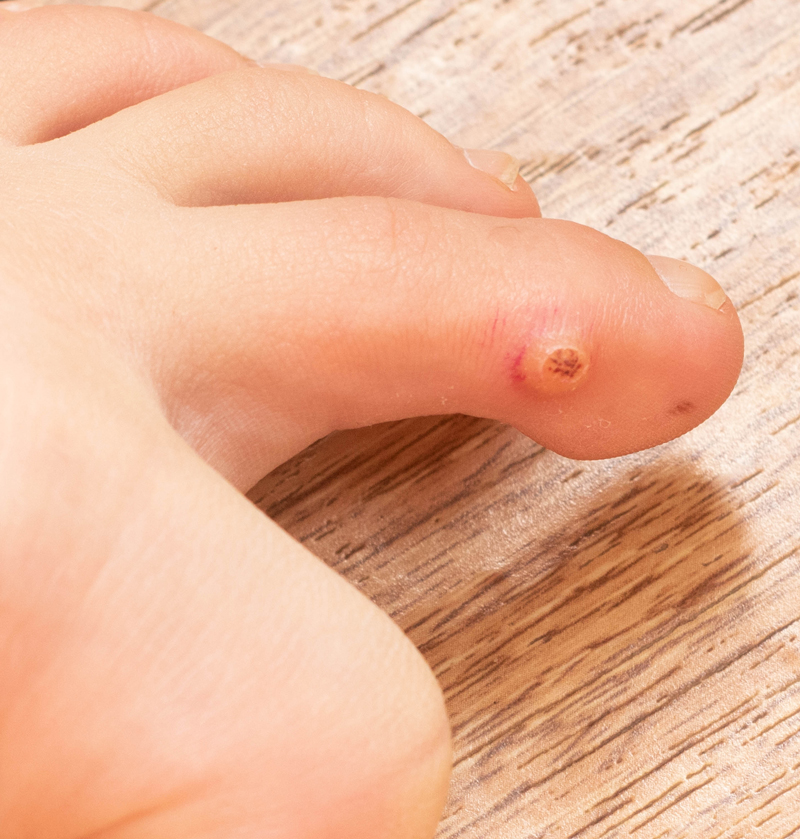Wart is a hard, rough growth on the surface of the skin. Warts may appear in many shapes, sizes, and places. They can even appear on the lips or tongue. On moist parts of the body, such as the genitals, warts may grow into masses like tiny cauliflowers. Warts that grow on the sole of the foot look like corns and make walking painful. Warts on the face may form little beardlike projections.

Warts result from infection by certain viruses. The viruses live in cells of the surface layer of the skin and do not infect the underlying tissue. The thickened surface layer forms folds into which little blood vessels grow. If a wart is scratched open, the virus may spread by contact to another part of the body or to another person.
More than 65 types of wart viruses can infect human beings. These viruses do not infect animals, and animal wart viruses do not infect people. Contrary to superstition, touching the skin of a toad will not cause warts.
Warts are common in children, and they usually affect the hands, arms, and legs. Most such warts disappear by the time the individual reaches age 20. Later in life, the appearance of many warts may be a sign of decreased immunity in patients with cancer or the human immunodeficiency virus (HIV, the virus that causes AIDS).
Many warts go away without treatment, perhaps because the body develops immunity to the virus. Physicians often remove warts by heating them with an electric needle or with a laser, or by freezing the wart tissue. Such treatments often require a local anesthetic to decrease the pain. Home remedies that apply chemicals to the skin often do not remove all the wart tissue, and the wart grows back in the same place.
